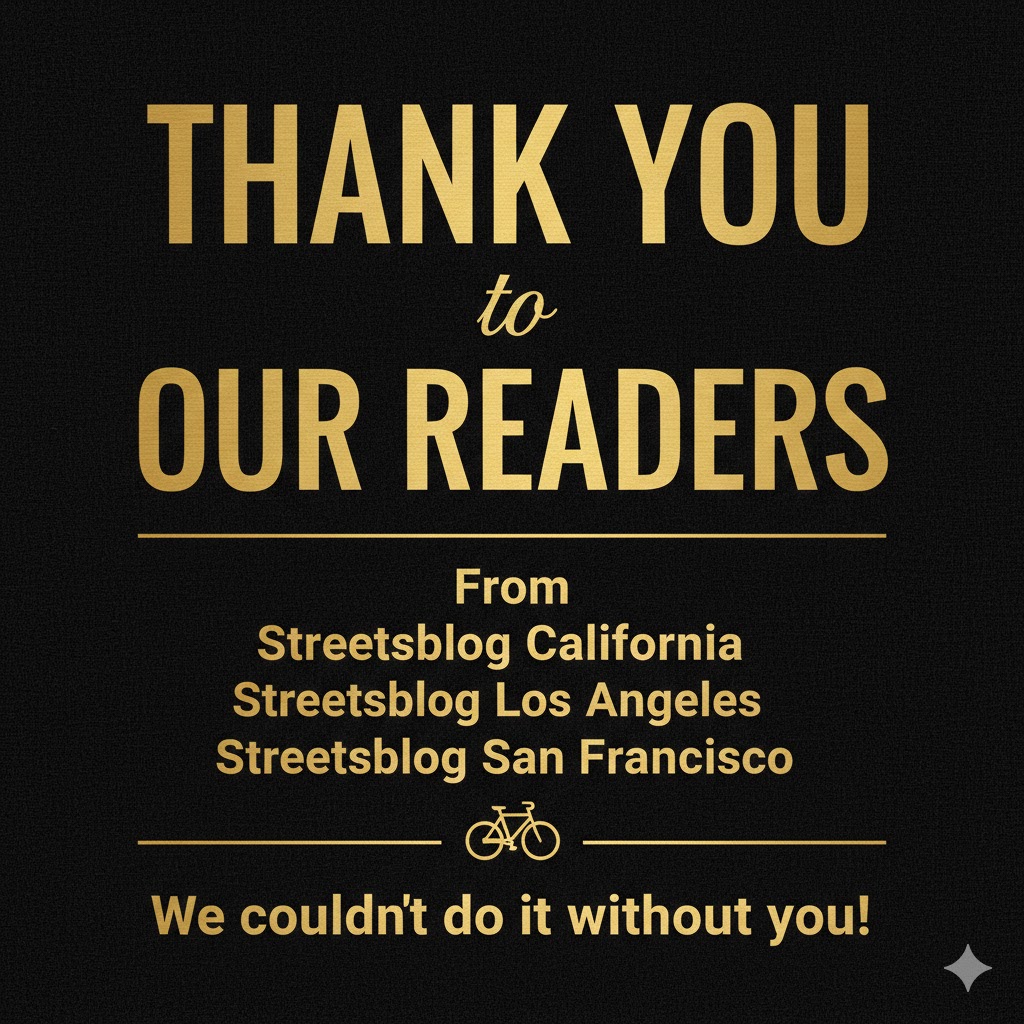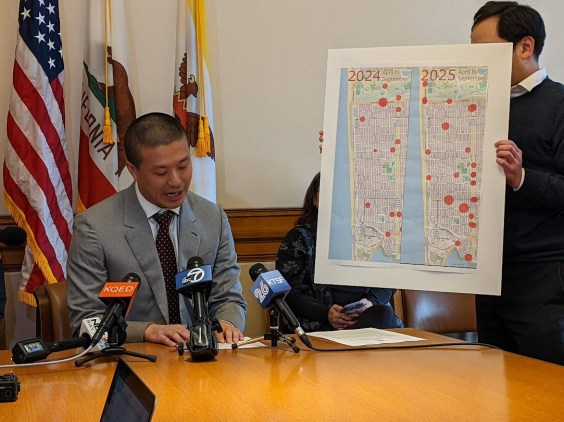Editor's Note: Former Deputy Executive Officer at the California Air Resources Board Craig Segall wrote this open letter to the legislature, including members of the Senate and Assembly committees currently working on a response to Governor Newsom's proposed state budget. According to statute, both legislative houses and Newsom must agree on a final version of the budget by the end of June.
Dear Honorable Members:
I am writing to urge you to fund transit operations throughout California, avoiding a transit death spiral that would otherwise profoundly undermine California’s climate and air quality goals. As you know, without immediate action, California’s transit agencies are likely to undergo drastic cuts in service and quality from which they may not recover. Because the Governor’s proposed May Revise budget does not address this crisis, the Legislature should act.
My views are informed by my recent tenure as Deputy Executive Officer of the California Air Resources Board (CARB), during which I oversaw development of the state’s pioneering zero emission vehicle rules, the current Investment Plan for Cap-and-Trade Auction Proceeds, and CARB’s billions in incentives programs. I am writing this letter entirely in my personal capacity, on behalf of no other party, and for no compensation, and am taking the time to do so because the matter is so urgent.
It is my considered opinion that the state cannot equitably or effectively meet its climate and air quality goals if public transit operations collapse, and that it is appropriate in this year’s budget to use a portion of the Greenhouse Gas Reduction Fund, among other revenue sources, to avert a public transit fiscal cliff. I urge you to take action now by fully funding the $5.1 billion request from transit advocates for transit operational support over five years.
More broadly, I urge you to increase funding support for transit operations throughout the state in coming years. California’s support for transit lags behind that of other leading world economies, and even other states – with results that are clear to see. Strong policy and budget support would enable post-pandemic creativity and system improvements that could allow a seamless and pleasant transit experience statewide.
The state’s governing climate policy documents make the need to act very clear.
The State Cannot Meet Its Climate and Air Quality Goals if Transit Falls into a Death Spiral
The bulk of air pollution in California comes from transportation, largely from private cars and trucks. Fixing this requires freeing Californians from car dependency, not just swapping out internal combustion vehicles with zero emission vehicles (ZEVs).
As CARB determined in its most recent Scoping Plan, “zero-emission vehicles (ZEV) alone are not enough to solve the climate crisis.” Although CARB’s Advanced Clean Cars 2 and Advanced Clean Fleets rules, which my former team designed, will require all new light duty vehicle sales to be ZEVs or strong hybrids by 2035 and all new heavy-duty vehicles sales to be ZEVs by 2036, there are tens of millions of existing internal combustion vehicles in use now, many of which will remain on the road through the 2040s and beyond. The state simply is not going to buy every Californian a new electric car or truck in time to meet clean air targets, nor will vehicles turn over quickly enough, even under plausible regulatory pressure. Instead, California needs to give people a range of transportation options, with public transit central to that effort. That is why the Scoping Plan called for a steep reduction in vehicle miles traveled (VMT) as a central part of California’s climate strategy.
As the Scoping Plan notes, “VMT reductions will play an indispensable role in reducing overall transportation energy demand and achieving the state’s climate, air quality, and equity goals.” And achieving this goal requires “supporting an ambitious expansion of transit service and other multimodal alternatives.”
What’s more, the separate State Implementation Plan, CARB’s parallel charter for achieving vital public health air quality standards – for which failure to plan would risk federal sanctions – echoes these points in the public health context. That document, developed after an extensive scientific review, determines that “reducing VMT is necessary to achieve federal air quality standards and the state’s climate goals and is an essential element of the state’s strategy to reduce emissions. In addition, lowering VMT will help alleviate traffic congestion, improve public health, reduce consumption of fossil fuels, and reduce infrastructure costs.”
Transit, of course, is at the core of these efforts.
Nor will enhanced spending on ZEVs obviate the need for supporting and modernizing our public transit infrastructure. It is laudable that the Legislature has budgeted billions of dollars for ZEV incentives, but vehicle purchase programs, while necessary, are an insufficient response to the challenges. The DMV reports that there were over 36 million vehicles registered in California as of 2021.
In contrast, CARB’s incentive programs have been able to fund hundreds of thousands of vehicles so far, nowhere near the need. As CARB’s Funding Plan explains, “California cannot rely on single-occupancy vehicles to meet transportation needs and the state’s climate goals” – which is why the plan calls for system upgrades, not just vehicle replacements.
Moreover, many of the incentive programs necessarily direct funds to car and truck makers whose non-ZEV products continue to contribute to the climate crisis, and who frequently attack and try to undermine California’s climate and public health programs.
In contrast, funds dedicated to transit ultimately benefit public agencies and operations that provide a vital public service. Though it may be necessary also to fund personal vehicle purchases at this juncture, public funds ultimately should increasingly sustain and expand the public transportation agencies serving the public good.
In sum, a ZEV-only strategy will not solve the transportation pollution problems that have rendered our air so unhealthy that it makes us ill; made the climate so fragile and unpredictable that we swing between drought, fire and flood; and made our streets and roads so unsafe that parents fear to let their children walk and bike to school. We need public transit, too.
Public Transit Helps Protect and Repair Underserved Communities
A world in which traffic simply becomes electric not only leaves the air dirty and the climate unsafe for far too long, it also replicates profoundly unjust development patterns that have left Californians mired in traffic and pollution for decades, with minority and lower-income communities most burdened. Saving transit would address multiple social and environmental problems at once.
California needs not just electric cars, but fewer cars. Our current car dependency is rooted in injustice. As the California State Transportation Agency recognized in its recent statewide transportation plan: “The profound impacts of redlining, highway expansion, and exclusionary zoning have left Black and Brown communities with fewer housing and transportation options; lower access to jobs, services, healthy food, and recreation; and heightened exposure to air pollution and traffic incidents.”
And car dependency continues to enact this toll, including through rising traffic deaths. Electric vehicles won’t make streets safer. Traffic fatalities have been on the rise in California in recent years, and injuries resulting from car crashes are the leading cause of death for children and young people ages five to 24.
California must not double down on a highway-centered, vehicle-only development pattern. The way forward – just like in countries all over the world -- is through affordable, compact cities and towns and rural communities with many transportation options, served by modern, clean, and affordable transit. To be sure, transit design requires continued creativity and focus in following the pandemic years, but, just as great public transit continues to enliven communities in many countries, it can help repair the damage done in California.
At present, as CARB has determined in a report to the Legislature, we are far from this vision. VMT continues to increase, contrary to state goals, so a change in policy direction is needed now. That recent CARB report determines that the “harms” associated with car-dependent planning “are worst in communities that have already borne the brunt of car-dependent planning in the past. Changing this status quo demands sustained investments in housing, transit, and walking and biking, as well as durable changes in how State, regional, and local governments fund and implement transportation and land use policies and projects.”
CARB acknowledges in its report that “transit ridership declines demonstrate that public transit must evolve to better meet changing community needs,” but identifies a wide range of options for that evolution – all of which would be foreclosed if public transportation is allowed to collapse.
Supporting Transit Is an Appropriate Use of Greenhouse Gas Reduction Fund Revenues
Many funding options to address this crisis are before you. Having overseen cap-and-trade investment planning, I wish to emphasize that GGRF revenues certainly should be among them. The governing Investment Plan is clear that “even with accelerated implementation of zero emission vehicles, equipment, and the associated infrastructure, Californians across the state will need to drive less in order to meet statewide and regional emissions reduction goals.” It emphasizes, therefore, that GGRF investments “are needed to support… transportation options that improve affordability and access to key destinations and reduce VMT, including public transit.”
Failure to fund transit needs will fundamentally undermine this effort. A recent study by TransForm showed that if Bay Area transit agencies are forced to cut services to balance their budgets, people will take 735 million more car trips just in the Bay Area alone, significantly increasing climate and air pollution, and bringing unjust health, mobility and climate impacts. Dedicating GGRF funds to ensure that California transit can survive, evolve, and thrive is entirely consistent with the goals of the GGRF and Investment Plan.
To be sure, there are many demands on the GGRF, and other funding options for transit are also important to bolster. This includes diverting funds that might otherwise be spent on highway expansions or road widenings that will only make the problem worse. But the need is great, and the GGRF should also be considered an important part of the funding portfolio for this fundamentally important public service.
Now Is the Time to Save Transit
I recognize that the present deficit presents you with tough choices. But for essentially the same reasons one would not simply allow vital public utilities like the power grid to collapse, the Legislature should not throw up its hands and let California’s already inadequate support for public transit wither. We can be proud that California is a leader in zero emission technology, but a snazzy new battery or some still-untested future tech development won't be enough.
The best climate and public health solution is a bus or tram, operated on complete and safe streets, serving a community that needs it. We need to fund public services, not just the next new thing. I hope that we can all rely upon the Legislature to protect the transit services on which so many communities depend.
Craig Holt Segall was until recently Deputy Executive Officer at the California Air Resources Board, overseeing the clean transportation transition.






